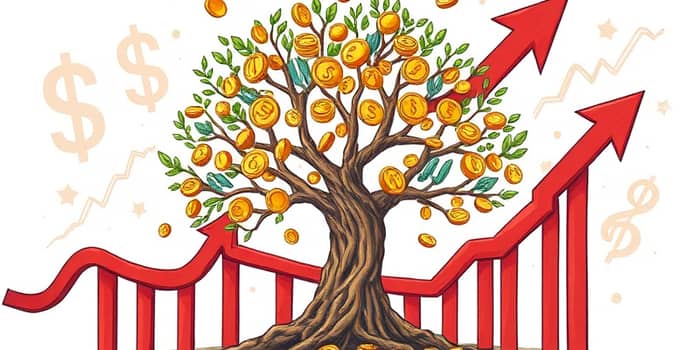Inflation is more than just an economic statistic—it’s a force that can quietly erode your wealth and reshape your financial goals. When prices rise, each dollar in your portfolio buys a little less.
Understanding the impact of inflation and adopting the right strategies is essential to preserve purchasing power and achieve long-term success. This article explores definitions, historical context, asset-class effects, and actionable steps to navigate inflationary times.
Understanding Inflation and Its Core Mechanics
At its heart, inflation represents a steady rise in general price levels, reducing the real value of money held in cash or fixed-income instruments. Central banks track inflation through indices like the Consumer Price Index (CPI), aiming for a moderate rate around 2%.
When inflation outpaces your investment returns, the result is a negative real gain—meaning higher costs that undermine returns. Recognizing this relationship is the first step toward shielding your assets.
The Direct Impact on Investment Returns
Inflation directly diminishes the real value of your nominal gains. For example, if your portfolio grows by 5% but inflation is 3%, your real return is just 2%. Persistent inflation can leave savers with shrinking purchasing power over time.
As this table illustrates, even modest inflation can turn nominal gains into real losses. Keeping cash or low-yield bonds in a high-inflation environment may not be sufficient to preserve wealth.
How Inflation Affects Different Asset Classes
Different investments respond uniquely to rising prices. Understanding these effects allows you to structure a portfolio that can withstand inflationary pressures.
- Cash and Savings: Lose purchasing power as prices climb.
- Bonds (Fixed-Income): Fixed coupons may yield negative real returns.
- Equities (Stocks): Mixed outcomes; value stocks often fare better.
- Real Assets: Real estate and commodities tend to keep pace.
- Inflation-Indexed Securities: TIPS and I Bonds adjust with inflation.
While stocks offer potential growth, rising costs of labor and materials can squeeze profit margins. Real assets like property and precious metals, by contrast, often appreciate alongside inflation.
Indirect Consequences: Interest Rates, Volatility, and Corporate Behavior
Central banks frequently respond to rising inflation by hiking interest rates. Higher rates increase borrowing costs, reduce bond prices, and can slow economic growth. For investors, this environment often means greater market uncertainty and volatility.
Companies adjust by either passing higher costs to consumers or investing in efficiency improvements. Small and medium enterprises with strong pricing power and low debt are better positioned to maintain margins when input costs climb.
Strategies to Shield and Grow Your Portfolio
Proactive measures can help you defend against inflation and harness opportunities in volatile markets. A thoughtful combination of assets creates resilience and potential for real growth.
- Embrace diversification across asset classes and geographies to spread risk.
- Allocate to real assets such as real estate, commodities, and gold.
- Include equities, particularly value stocks with low financial leverage.
- Invest in inflation-indexed securities like TIPS and I Bonds.
- Regularly review and adjust your portfolio to reflect changing conditions.
Limiting uninvested cash is crucial; while a cash cushion addresses short-term needs, excess cash in high-inflation periods can drag overall performance.
Consulting a financial advisor can provide tailored strategies. Professional guidance helps ensure your approach aligns with your goals and risk tolerance.
Conclusion: Turning Inflation Into Opportunity
Inflation may seem like an adversary, but with informed decisions, you can transform a challenge into an investment opportunity. By understanding its dynamics and implementing thoughtful strategies, you safeguard your purchasing power and pave the way for sustainable growth.
Stay vigilant, adapt your portfolio, and embrace a diversified, inflation-resilient approach. In doing so, you won’t just weather rising prices—you’ll thrive despite them.
References
- https://www.usbank.com/financialiq/invest-your-money/investment-strategies/effects-of-inflation-on-investments.html
- https://www.investopedia.com/ask/answers/what-is-inflation-and-how-should-it-affect-investing/
- https://www.westernsouthern.com/investments/the-impact-of-inflation-on-your-savings-and-investments
- https://www.aviva.co.uk/investments/investing-for-beginners/what-is-inflation/
- https://www.investopedia.com/articles/investing/052913/inflations-impact-stock-returns.asp
- https://www.nerdwallet.com/article/investing/inflation










